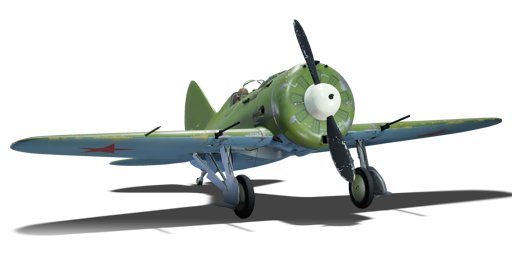

Aviation
I-16 type 28
II
Rank
AB
3.3
RB
3.3
SB
2.7
Battle rating
USSR
Game nation
Fighter
Main role

Premium vehicle
Status
General information
Flight performance
Max speed
at 2,000 m
463425492442 km/h
Rate of Climb
1813.923.213.9 m/s
Turn time
16.51815.717.4 s
Max altitude
9,950 m
Takeoff Run
271 m
Landing
flaps
flaps
Take-off
flaps
flaps
Combat
flaps
flaps
Air
brake
brake
General characteristics
Crew
1 person
Engine
Length
6.1 m
Wingspan
9 m
Wing Loading
157 kg/m²
Weight:
Base weight
1.81.851.751.84 t
Fuel in main tanks
0.15 t (34m)
Limits:
Max Speed Limit (IAS)
700 km/h
Mach Number Limit
0.75 M
G limit
≈ -7/14 G
Flap Speed Limit (IAS)
L / T / C
260 / 363 / 395 km/h
Gear Speed Limit (IAS)
260 km/h
Offensive armament
2 × 20 mm ShVAK cannon
Ammunition
300 rounds
Fire rate
800 shots/min
One-second Burst Mass
1.21 kg
| Belt | Belt filling | Armor penetration (mm) at a distance: | |||||
|---|---|---|---|---|---|---|---|
| 10 m | 100 m | 500 m | 1000 m | 1500 m | 2000 m | ||
| T/HEF-I | 10 | 8 | 7 | 6 | 0 | 0 | |
| T/HEF-I/T/T | 10 | 8 | 7 | 6 | 0 | 0 | |
| HEF/HEF-I/HEF/T | 10 | 8 | 7 | 6 | 0 | 0 | |
| HEF | 3 | 3 | 3 | 3 | 3 | 3 | |
2 × 7.62 mm ShKAS machine gun
Ammunition
1,300 rounds
Fire rate
1,800 shots/min
One-second Burst Mass
0.29 kg
| Belt | Belt filling | Armor penetration (mm) at a distance: | |||||
|---|---|---|---|---|---|---|---|
| 10 m | 100 m | 500 m | 1000 m | 1500 m | 2000 m | ||
| T/Ball/Ball/AP-I/AI | 13 | 12 | 7 | 3 | 2 | 0 | |
| AP-I/AI/API-T | 13 | 12 | 7 | 3 | 2 | 0 | |
| AP-I/API-T | 13 | 12 | 7 | 3 | 2 | 0 | |
| AP-I/AP-I/AP-I/AI | 13 | 12 | 7 | 3 | 2 | 0 | |
Suspended armament
Setup 1
2 × 100 kg FAB-100sv (forged) bomb
Setup 2
2 × 50 kg FAB-50sv (forged) bomb
Setup 3
6 × ROS-82 rockets
Setup 4
6 × RBS-82 rockets
Economy
Repair cost
AB
977 

RB
1,207 

SB
1,089 

Crew training
3,400 

Experts
23,000 

Aces
180 

Research Aces
380,000 

Reward multiplier
AB / RB / SB
 2 x (40 / 85 / 190) %
2 x (40 / 85 / 190) % 
 2 x 118 %
2 x 118 % 

Premium vehicle
All modifications are unlocked
Flight performance | |
|---|---|
Survivability |
|---|
Weaponry | |
|---|---|
Rating by players
You must play more than 3 battles for the last week and more than 10 battles in a vehicle to rate it.
Like:
15
Flight performance:
Not enough ratings
Survivability:
Not enough ratings
Aerial combat:
Not enough ratings
Ground attack:
Not enough ratings
Balance:
Not enough ratings
Tips & Tricks
This space is currently empty
Do you know any interesting vehicle features?
Loading...
No articles about this vehicle yet
Become the first author and get rewards!
Write a guide, tell about interesting historical facts, make a tutorial or simply an interesting post.
No more content